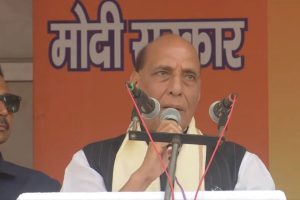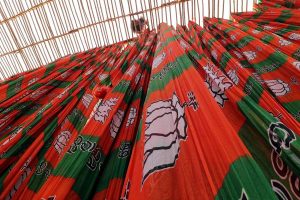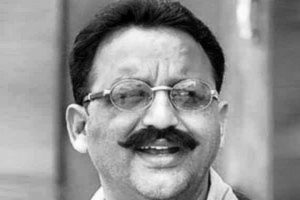Meghnad Saha’s (1893-1956) meteoric rise to fame as a young physicist has eclipsed much of his other contributions to the national cause – as an inspiring teacher, as a builder of scientific institutions and as a public figure engaged in various activities from flood control to calendar reforms. While Saha, whose 125th birth anniversary has been celebrated in academic circles, is known for the thermal ionisation theory considered by Sir Arthur Eddington ‘as one of the ten outstanding discoveries of astronomy and astrophysics since the discovery of the telescope, in 1608, by Galileo’, it is time to assess his genius in its totality.
S Chandrasekhar told Kameshwar C Wali (Chandra, Viking, 1991) that “Between 1920 and 1925, we had suddenly five or six internationally wellknown men” a phenomenon he associates “with the need for self-expression, which became a dominant motive among the young during the national movement.” At least four major works – “Saha’s ionisation equation, Bose-Einstein statistics, Raman effect and Chandrasekhar limit’”- suddenly catapulted Indian scientists – with Srinivas Ramanujan and JC Bose before them – to global renown. The first English translation of Einstein’s Theory of Relativity from the original German was published by young Saha and Bose in 1920.
Robert Anderson in his book Building Scientific Institutions in India: Saha and Bhabha (Montreal: Centre for Developing-Area Studies, McGill University, 1975) analysed the historical context as also the social and educational backgrounds that shaped them. Born as a poor shopkeeper’s son in rural Bengal, reared in its revolutionary and nationalist ideals and influenced by teachers like Acharya JC Bose and PC Ray, Saha had been a lifelong crusader for causes he held dear. Later, Saha’s reputation as a teacher spread far and wide. His students like DS Kothari, BD Nagchaudhuri, PK Kichlu and many others influenced substantially the course of study and research of physics in India.
Bhabha’s training and background, hence approach, were very different from Saha’s. But both were close to and respectful of Nehru. Saha saw hope in Nehru as a modern man with a vision, different from other Congress leaders of the day wedded to ‘khaddar’ and ‘charkha’, and dissuaded M. Visvesvaraya from accepting the chairmanship of the National Planning Committee while suggesting Nehru instead. Yet on the issue of establishing the Atomic Energy Commission, after Independence, there was a clear disagreement. Unlike Bhabha, Saha opposed its setting up at that time since India had not been ready with the industrial base and trained manpower required for that purpose, and preferred the French model for India. Nehru, however, favoured the approach of Bhabha.
It should be remembered that Saha introduced nuclear physics as a compulsory subject at MSc level (1939), surmised the possibility of selfsustained fission (1941), set up the Institute of Nuclear Physics (1950) in which Asia’s first Cyclotron was built. However, Saha’s continued differences with bureaucrats, as G. Venkataraman narrates in his book Saha and His Formula (Universities Press, Hyderabad, 1995), his strong disapproval of certain symbols as reflecting ‘a retrograde and anti-scientific mentality’, and his evangelist spirit did not always endear him in power circles.
It is unfortunate for Indian science that the three great physicists at Calcutta – Raman, Saha and Bose – couldn’t work together as a team. Raman went to Bangalore, Saha to Allahabad and Bose to Dacca. Raman and Saha had strong disagreements, sometime acrimonious. Personal ego, rivalry and provincial chauvinism played their part, creating an undesirable atmosphere. Nevertheless, Saha’s stewardship in founding India’s first science academy at Allahabad (1930) as also what is now known as Indian National Science Academy, Indian Science News Association, the journal Science and Culture, developing the Indian Association for the Cultivation of Science at the Jadavpur campus, setting up of the Central Glass and Ceramic Research Institute etc. bear testimony to his vision and zeal.
On his election as an independent candidate to the first Lok Sabha, Saha’s public activities expanded. Though often critical of the government, he chaired the Calendar Reform Committee to propose a uniform calendar for India that led the government to adopt the Saka Calendar from 1956. Saha attended a UN meeting to explain the desirability of World Calendar Reform based on scientific principles. Rajinder Singh shows in his article in Science and Culture (Sept- Oct, 2018, Ed. SC Roy), that Saha even wrote to Einstein in 1954 seeking his intervention when some Jewish organisations objected to this idea on religious grounds.
Based on his first-hand experience during the devastating flood in Bengal in 1922, his interest grew in ‘River Physics’ to combat the problem of rivers. He studied the irrigation systems in ancient India as a true professional. Inspired by the example of Tennessee Valley Authority, Saha prepared the first master plan for Damodar Valley project in 1944.
Saha’s whole life was marked by his relentless fight against adversity. In his early life, he faced humiliating caste discrimination. He fought against obscurantism as also against colonial rule. Even after his election as a Fellow of the Royal Society (FRS), he had to work in almost primitive laboratories struggling to obtain meagre grants to purchase equipment and books for his work. His scientific recognition was handicapped on account of publication of a major paper in a local journal. He missed the Nobel Prize despite being recommended by leading scientists of his time. Saha had even to respond to criticisms that all he discovered had been there in the Vedas! His work on flood control did not receive much appreciation. His ideas that universities should be the hub of scientific research, as he saw it happening during his formative years, have also been largely ignored.
Caste discrimination and religious fundamentalism are not things of the past. The state of scientific research in most of our universities is dismal. Scientific institutions are alleged to be acting like government departments. Is the time not yet ripe to revisit Saha’s ideas?
Today, about hundred years after his path-breaking work on thermal ionisation, supposedly beginning the era of modern astrophysics, Saha stands tall as a scientist. But his contribution as a shaper of modern India seems to have been forgotten by his countrymen.
(The writer is a retired IAS officer)











